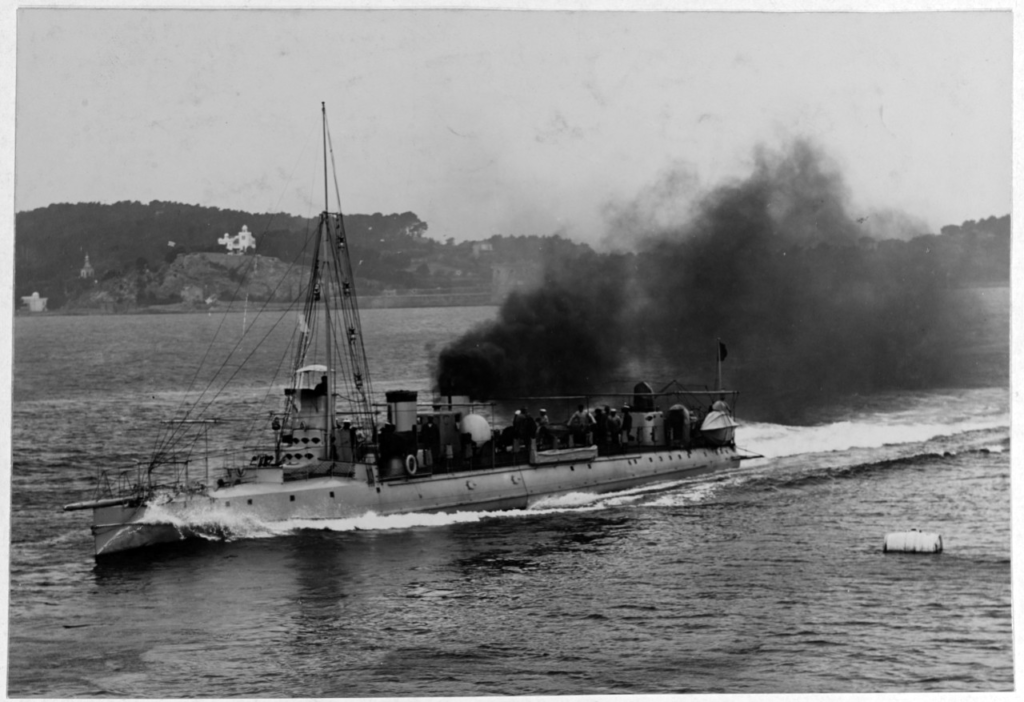This website has already had cause to write about the lads of the Jeune École – a bunch of theorists and designers whose ideas dominated French naval thinking towards the end of the nineteenth century. It’s irresistible not to think about them again with news that Ukraine has inconvenienced a Russian landing ship with a remotely operated bomb drone.

To explain, it’s worth understanding where the Jeune École were coming from.
In the 1880s the problem facing the Marine nationale was, as traditional, the Royal Navy. It was bigger, it was better funded, and it was not much more than twenty miles away. This was not a happy thought.
Fortunately the Jeune École could see a solution.
Then, as now, torpedoes threatened to rip the arse out of a ship in the way that a shell simply can’t. The early designs might have been slow, cumbersome and short-ranged, but the Royal Navy couldn’t ignore the danger. And a boat capable of carrying a torpedo cost a heck of a lot less than the battleship it threatened. For the French, this was exactly what they needed.

I like to rag on the Jeune École. It’s easy to portray them – thanks to the way their ships look – as a bunch of loonies who had unwisely been given a box of crayons and the keys to the dockyard. With torpedo boats though (and with their other big idea of threatening British commerce) they were onto something.
They offered a way for a weaker, cheaper navy to deny control of the seas to a nominally superior foe. The definitive image of the French navy in 1890 isn’t one of their staggeringly wonky battleships. It’s one of their torpedo boats.

And that’s what brings us back to Ukraine. The Ukrainian navy can’t go toe to toe with the Russians, not least as they’ve lost almost all their ships. Torpedoes would be lovely, but they’ve no way of delivering them. They’ve got missiles – just ask Moskva about that – but the Russians are now wisely staying out of range. And incidentally the Jeune École would have absolutely wet themselves at having missiles to play with. The thought of them having both missiles and hovercraft is almost too delicious to contemplate.
I digress.
Naval drones though – they tick all the boxes. They’re cheap. They’re dangerous. And they’re giving the Russians an almighty headache in what they would consider their home waters. They are utterly, incontrovertibly Jeune École – the use of technology to wage asymmetric naval warfare.
History doesn’t repeat itself. But sometimes it rhymes.
3 thoughts on “Ukraine: Back to the Future”
Comments are closed.



I love your captions!
Cyclone of 1898 has echos in the Admiral Kuznetsov of 1991!
A missile armed hovercraft or hydrofoil would add a lot to Ukraine’s naval capability. Just an unarmed hovercraft for Ukraine to add a Neptune or Harpoon missile to could have a big impact. All cargo ships in the NE Black Sea are legitimate targets.
That sounds almost like a maritime Technical to me. (Please tell med Mitsubishi or Toyota make hovercraft..?)
I think the best naval technical so far has been the Danish murder tug…